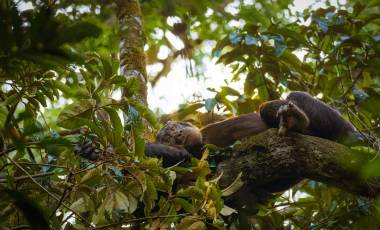The Pearl of Africa
Uganda’s natural beauty has hardly escaped notice. In 1909, Sir Winston Churchill famously called it “the Pearl of Africa,” a sentiment echoed more prosaically today whenever contemporary travelers ooh and aah over the country’s diversity of people, wildlife and ecosystems.
Uganda occupies a special geographical position, spanning the land where western and eastern Africa come together. Its highland rainforests are home to the famous Mountain Gorillas and teeming with beautiful birds; its tropical rainforests populated with chimpanzees, and its savannas populated by big mammals. This also explains the wide range of habitats, including woodlands, wetlands, moorlands, mountains, rivers, and lakes (approximately 20% of the country is covered by water).
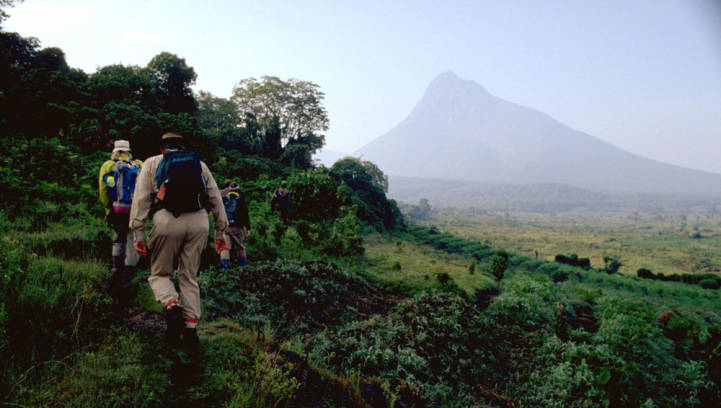
No wonder Lonely Planet ranked Uganda first on its Best in Travel list for 2012, the 50th anniversary of the country’s independence. While years have passed since then, the country’s magnificence hasn’t paled in the least. But in a country of superlatives—the world’s largest free-standing volcano, the world’s second-largest freshwater lake, Africa’s highest mountain range, the headwaters of the world’s longest river— how do you choose the best things to do in Uganda?
It’s easy to get overwhelmed by Uganda’s 10 national parks, its status as one of Africa’s most popular birding destinations (with around 1,050 species—50% of those on the continent and 11% in the world), its 18 primate species and its impressive panoply of outdoor activities, including fishing, mountaineering, rafting, community-based ecotourism, cultural tourism and more.
To help narrow your choices, here’s a look at the Uganda National Parks you can explore on Exodus small-group Uganda safari or a private group Uganda safari.
1. Queen Elizabeth National Park
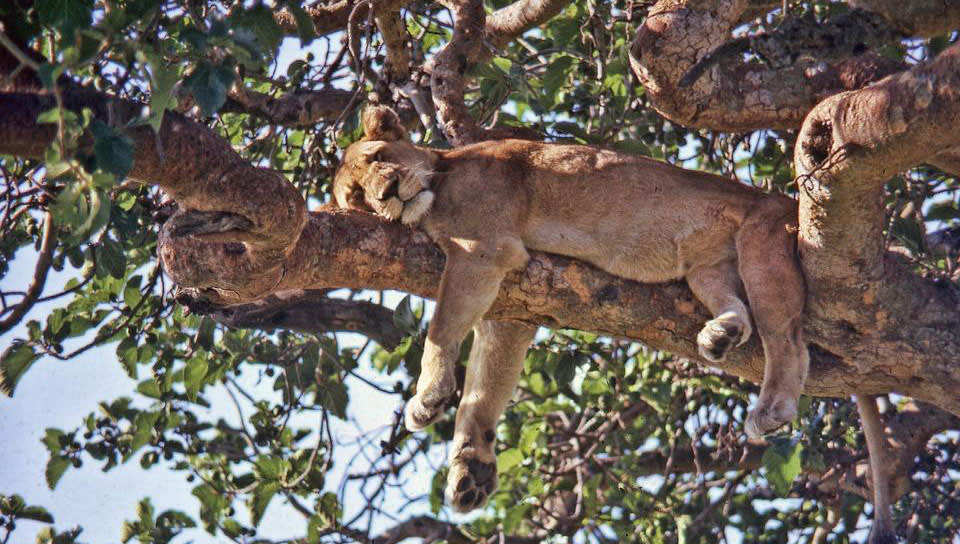
Located in the southwest about 400 km from Kampala, Queen Elizabeth National Park is Uganda’s second-largest and most popular conservation area. Its 1,978 square kilometers were first gazetted in 1952 as Kazinga National Park, but its name was changed two years later in honor of a visit by the British monarch.
The park’s popularity is principally due to its breathtaking biodiversity. Spread across the Albertine Rift Valley, the park offers savanna, acacia woodlands, tropical forests, fertile wetlands and lakes within its borders, providing safe haven to over 600 bird species and 95 mammals, including elephants, hippos, African leopards and 10 species of primates. No wonder the QENP has been recognized by Birding International as an International Birding Area.
Two of the park’s unique wildlife experiences are chimpanzee tracking in the Kyambura Gorge and sighting the unusual tree-climbing lions, which perch in the giant fig and acacia trees of the Ishasha sector. Other highlights are the two-hour boat ride along the Kazinga Channel; guided walks through the dark Maramagambo Forest; and cultural encounters with local communities, like the salt workers at the Lake Katwe evaporation pans.
2. Murchison Falls National Park
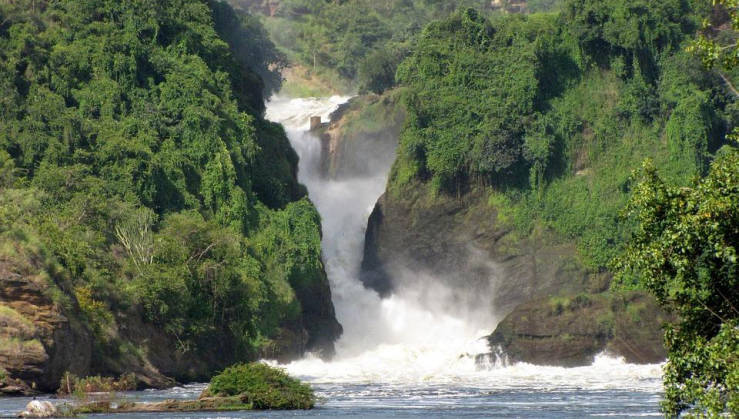
The sprawling 3,840 square kilometers of Murchison Falls National Park, found 300-plus kilometers northwest of Kampala, make it Uganda’s largest protected natural area. It is also the oldest, originally established in 1952.
Famous as the location of Murchison Falls—the thunderous cataract where the Nile River squeezes through a six-meter gap and then plunges 43 meters—the park is also a magnet for birders and animal lovers. The 450 species of fowl recorded here include the rare shoebill stork and many endemics, while the 76 mammals include four of the Big Five (all but the rhinoceros, which live in special protected isolation at the Ziwa Rhino Sanctuary).
Although game drives are a customary means of scouting for wildlife here, a special game cruise on the Nile is a relaxing way to take in the park’s changing landscape. The views of the water’s edge and up to the falls are not to be forgotten, as is the hike from the boat landing to the falls, which are visible from below and above.
3. Bwindi Impenetrable Forest National Park
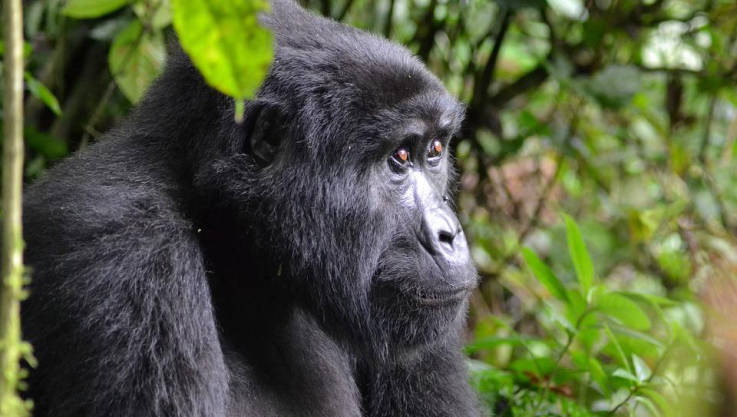
Although small—just 321 square kilometers—Bwindi Impenetrable National Park is of crucial importance as home to the world’s largest population of critically endangered mountain gorillas. The park contains about one-third of the 1,000 or so alive today, with the remainder in the Virunga conservation area shared by Rwanda and Congo. (For more about the gorillas and the experience of visiting one of Bwindi’s 10 habituated gorilla groups, see Tracking Gorillas: The Bigger Conservation Picture.)
Preserved on the edge of the Rift Valley in southwest Uganda, Bwindi was established in 1991 as part of the conservation effort to save the mountain gorillas. Three years later, this island of remnant forest—one of Africa’s richest and oldest (dating back about 25,000 years)—was recognized by UNESCO as a natural World Heritage Site.
Beyond the gorillas, Bwindi is full of other life. In fact, it is one of the richest ecosystems in Africa, with 120 species of mammals, 350 species of birds (earning it the title of the Best Birding Destination in Africa by Travel Africa magazine), 200 tree species, 310 butterfly species, 88 moth species, 51 reptile species and 27 frogs, geckos and chameleons.
The humans of Bwindi are also notable. The indigenous Batwa people were exiled from their historic lands when the park was created. They now reside in an adjacent buffer zone, from which they lead tours that teach visitors about their age-old hunting, hut-building, honey-harvesting, agricultural and trapping practices, as well as sharing traditional music and dance.
4. Kibale National Park
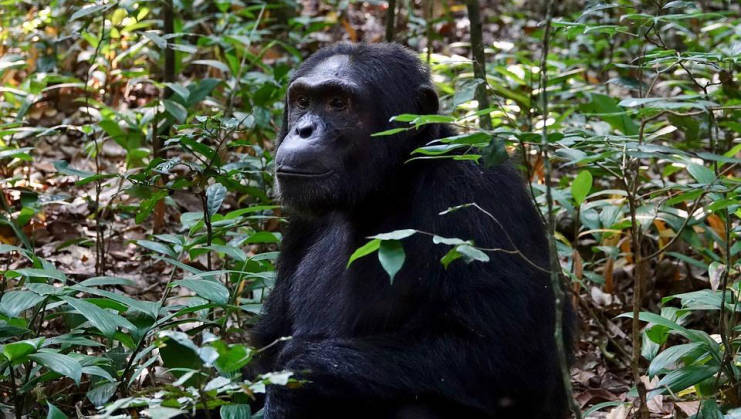
Two things stand out most about Kibale National Park—its world-famous endangered chimpanzees and the diversity of its habitats.
A medium-size park (795 square kilometers) contiguous with Queen Elizabeth National Park, Kibale is a rare expanse containing both lowland and montane forests, including the last large tract of pre-montane forest in eastern Africa. Altogether, more than 350 tree species have been registered in the park’s lush and variable woodlands.
Kibale is especially popular with visitors seeking out its habituated chimpanzees, as well as 12 other primate species. Spend a day with a Uganda Wildlife Authority guide to learn how chimpanzees are habituated and discover other forest inhabitants.
In addition to the chimps, more than 50 other terrestrial mammals and 350-plus species of birds take advantage of their freedom of movement along the important 180-kilometer wildlife corridor, of which the park is a part.
5. Rwenzori Mountains National Park
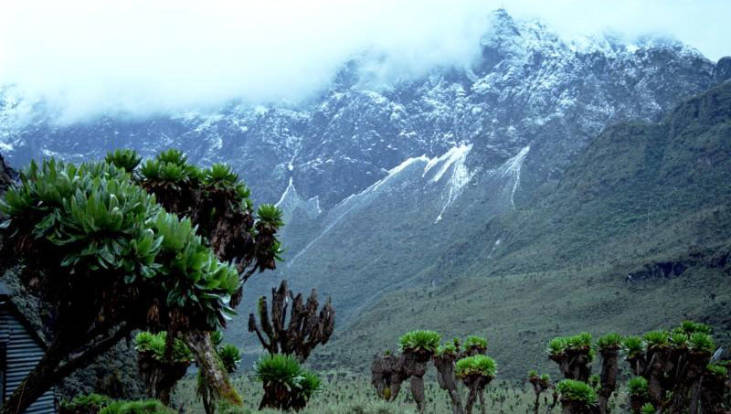
Like Bwindi, Rwenzori Mountains National Park was gazetted in 1991 and recognized as a UNESCO World Heritage Site three years later, in light of its mountain flora biodiversity (the greatest in Africa). Its 996 square kilometers in western Uganda are flush against the border with the Democratic Republic of the Congo and serve as a stunning backdrop to Queen Elizabeth National Park.
Dominated by its famous “Mountains of the Moon” (the source of the Nile), the park is a world-class destination for hiking and mountaineering. Safaris here move through a mixture of ecosystems that include rainforests, alpine meadows, and a wonderland of glacier-carved and lake-filled valleys. These abound with rare montane vegetation and more than 70 mammal species (many of them endangered) and 217 bird species.
Visitors will also find the discovery of Bakonzo culture through village walks to be just as entrancing.
6. Kidepo Valley National Park
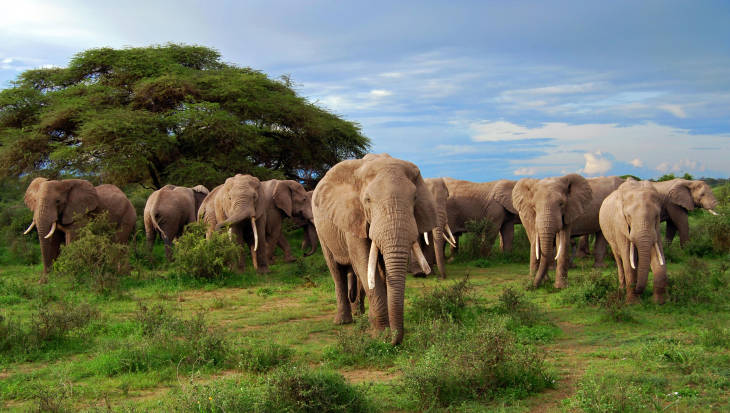
The semi-arid valleys and savanna of Uganda’s far north is the setting of Kidepo Valley National Park, the country’s most isolated national park and home to some of Africa’s most stunning wilderness.
The park’s 1,442 square kilometers are divided across two river valleys, the Kidepo and the Narus. In dry season, the water recedes to seasonal oases—wetlands and remnant pools—near Apoka, in the Narus Valley.
This makes Kidepo perfect for watching the 475 species of birds and 77 mammal species that inhabit the park, including ostriches and cheetahs, via Jeep safaris on dirt roads that crisscross its southern and western reaches.
7. Lake Mburo National Park
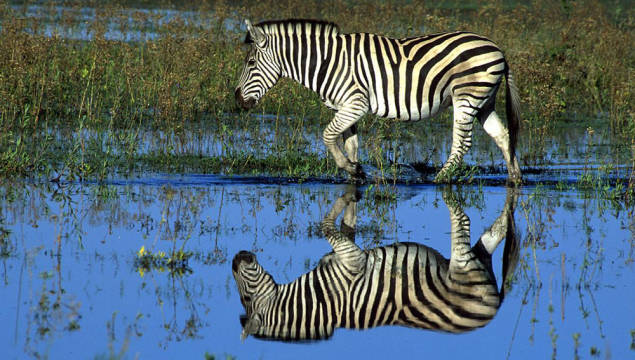
Covering just 370 square kilometers of wetlands and woodlands, Lake Mburo National Park is a short distance off the main highway about 235 kilometers west of Kampala.
Once a controlled hunting area and then a game reserve, it became Uganda’s smallest savanna national park in 1983. It is now the protected home of 350 bird species and 69 animal species, including zebras, buffalo, leopards, and hippos. It is also the only park in Uganda with impalas.
Lake Mburo, around which the national park is wrapped, is part of a 14-lake, 50 km-long wetland system that was declared a Ramsar Wetland in 2006. The wetland system accounts for only about a fifth of the park area, the rest of which is spread over savanna and woodlands.
Some of the most common park pleasures are birding on the lake (one of the best birding spots in Uganda) and in the nearby Rubanga forest. There are also game drives, guided nature walks to salt licks and cultural experiences with local Banyankore community groups.
8. Semuliki National Park

For a taste of Central Africa without leaving Uganda, there’s Semuliki National Park, the country’s newest park, which was confirmed in 1993. Semuliki sits in a wide, flat valley to the west of the Rwenzori Mountains, right along the border with the Democratic Republic of the Congo. Geologically, this is the eastern edge of the Congo Basin’s vast and ancient Ituri Forest, which is notable for its biodiversity.
The park is home to 441 known bird species and 53 types of mammals and is one of the few African forests to have survived the last Ice Age. There are also four ethnic groups that live near the park, including the Batwa (formerly known as pygmies). Semuliki’s 220 square kilometers include a true lowland tropical forest (the only one in East Africa) and savanna grassland, much of it prone to flooding during the wet season.
Visitors can take this in during birdwatching and game-viewing drives, and while hiking the 13km Kirumia Trail. They’ll also want to check out the well-known hot springs, such as Sempaya Hot Springs (which run so hot, they can hard boil an egg in 10 minutes) and the Mumbuga spring geyser.
9. Mgahinga Gorilla National Park
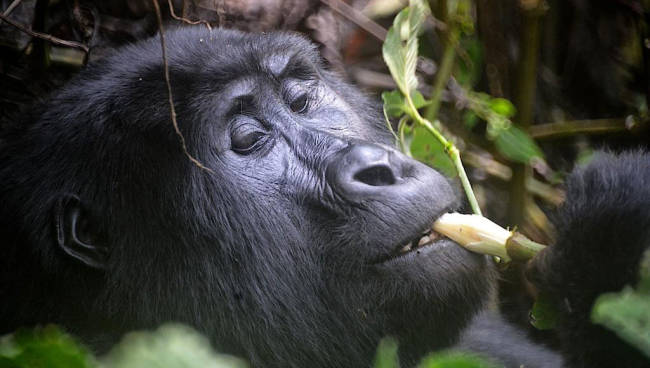
At a mere 33.7 square kilometers, Mgahinga is Uganda’s smallest national park, pushed up against the international border in the far southwest. While it may be limited in size, it is part of the much larger (and extremely important) Virunga conservation area, which spreads for thousands of square kilometers across protected areas in Uganda, the DRC, and Rwanda.
This high-elevation park was established primarily to protect freedom of movement by the area’s endangered, forest-dwelling Mountain Gorillas and Golden Monkeys. It is also part of the original territory of the indigenous Batwa people.
The park’s dramatic scenery includes the cones of three extinct volcanoes, a dramatic backdrop of the border-hugging Virunga Range, which is known for its rich biodiversity.
10. Mount Elgon National Park
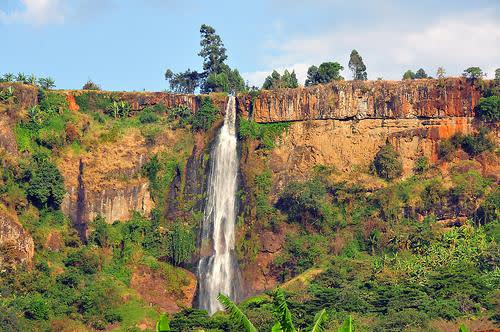
The dominant feature of Mount Elgon National Park is, of course, Mount Elgon itself, the massively eroded remains of an extinct shield volcano that was once Africa’s tallest mountain.
At 4,321 meters, it is now the eighth tallest in Africa, with a base that is still the largest in the world. This is also the largest and oldest solitary volcanic mountain in East Africa, measuring 80 kilometers in diameter, with a caldera of more than 40 square kilometers.
Located in eastern Uganda on the border with Kenya, Mount Elgon National Park’s 1,279 square kilometers fall across both countries, though most (1,121 square kilometers) are in Uganda. It is home to a wide variety of climates (influenced by elevation), mammals both big and small and 300-plus bird species.
Visitors to the park look to explore the park’s waterfalls, gorges, hot springs within the caldera, explorable caves (which are known for animals stepping in to lick salt from the cave walls) and, especially, the mountain peaks. Activities here include vehicle tours, self-guided walking trails, animal and bird watching and more. The two-hour trail to the top of Mount Elgon’s Wagagai Peak is rarely the ultimate goal, as many people carry on to explore the vast caldera.
A Final Thought
After decades of hardship under politically oppressive regimes, Uganda is finally coming back into its own and trying to right many wrongs. As one of the core sectors driving the country’s socio-economic transformation, tourism plays a big part in that.
With this in mind, remember that the Uganda Wildlife Authority, which oversees Uganda’s parks, gives 20% of all park collections to communities that border the parks to develop facilities such as schools, hospitals, water infrastructure, and roads. Any money spent on appreciating wildlife is also helping to improve the quality of life and establish a more stable equilibrium between humans and animals.
Finally, don’t forget the Uganda Wildlife Education Center. Located near Kampala in Entebbe, it’s the biggest wildlife conservation orphanage in the country and receives more people per year than all of Uganda’s national parks combined. The center offers a taste of Uganda’s wildlife at a glance, with savanna, wetlands, forest, and hills on 72 hectares of protected land.
Discover all our trips to Uganda here.

